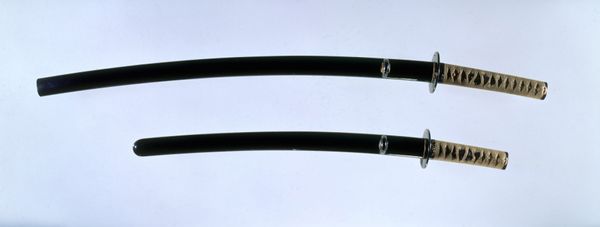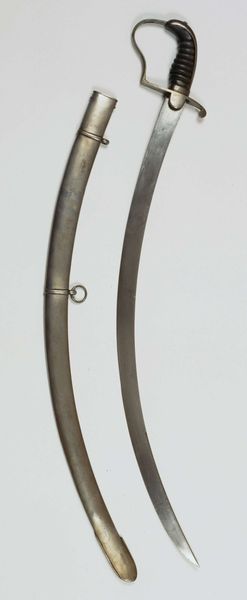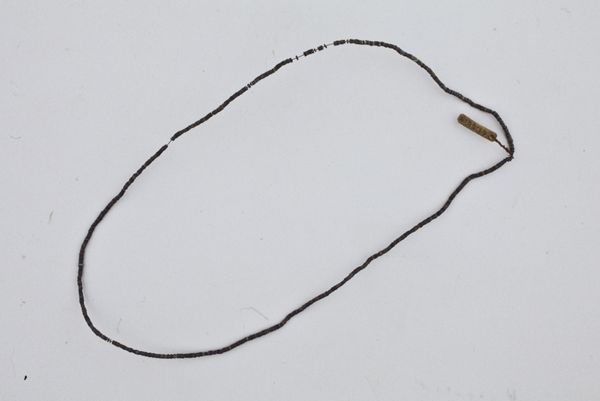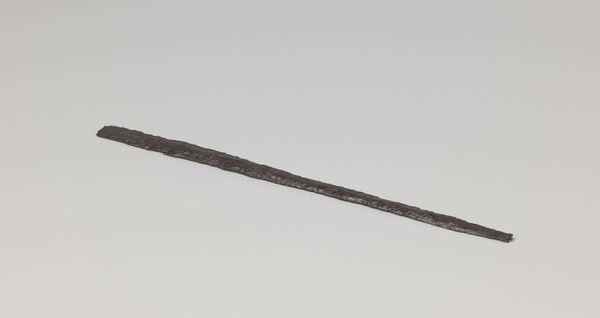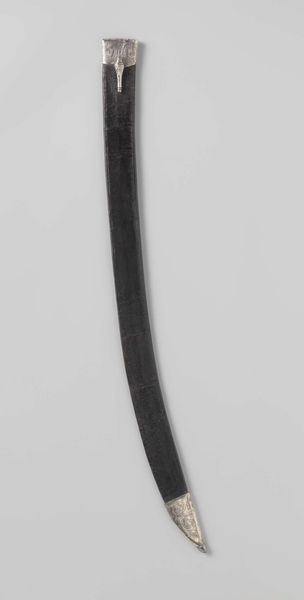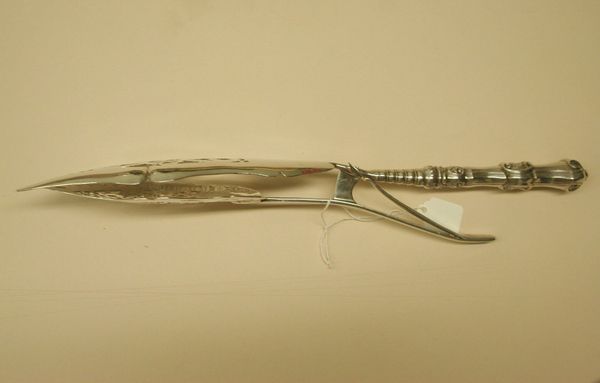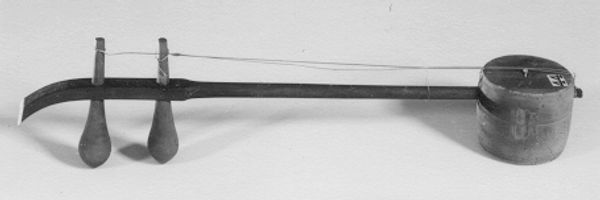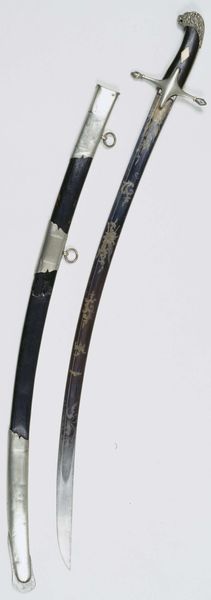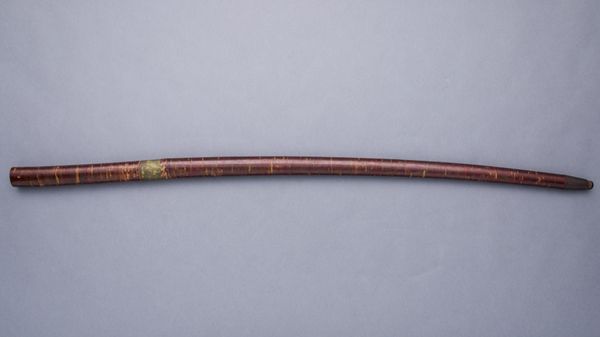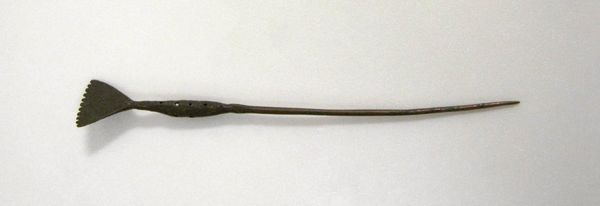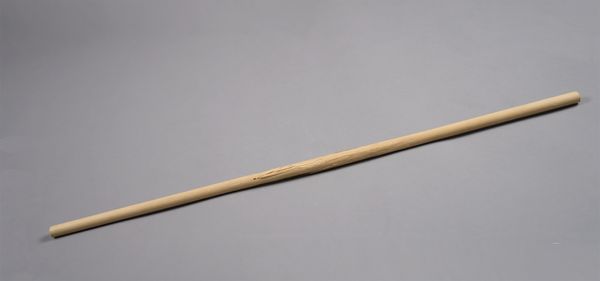
sculpture, wood
#
sculpture
#
sculpture
#
wood
Dimensions: 42 x 2 x 2 5/16 in. (106.7 x 5.1 x 5.9 cm)
Copyright: Public Domain
Editor: We're looking at a wooden sculpture called "Staff," likely made in the late 19th or early 20th century by the Hungaan people. The piece seems unassuming at first, almost like a walking stick, but it has some ornate carving near the top. What role might objects like this have played in their society? Curator: That's a great observation. Staves such as this weren’t simply functional objects, but potent symbols of authority and ritual within many African societies. They speak to a complex history of social structures and beliefs. Hungaan staves, especially those adorned with carvings, were often associated with leadership roles and ceremonies. Who do you think would have been using a staff like this one? Editor: Perhaps someone in a position of power or a religious leader? The carvings suggest it held significance beyond just practical use. It almost seems to tell a story. Curator: Exactly! Consider how these objects are presented in museum contexts today. Often, we highlight their aesthetic qualities. However, this isolates them from their original cultural function. Understanding its societal use helps us decipher the visual language embedded in the staff’s carvings, enriching our engagement and helping move past simplistic Western aesthetics of what we perceive as primitive. Editor: So, seeing this object outside its intended environment alters its meaning and value? Curator: Precisely. The gallery context, the wall label – all these things frame our understanding. A crucial consideration would be asking ourselves what are we actually seeing, versus what assumptions are we bringing to the viewing. We have to think about how these settings and displays transform an object that once actively participated in social life into a static exhibit, one devoid of sound, motion and agency. Editor: That's a powerful idea. It encourages me to question the way art is presented and to consider its historical context. Thank you for pointing this out! Curator: And thank you for your insightful questions! Reflecting on an object's place within history is vital when seeking greater engagement.
Comments
No comments
Be the first to comment and join the conversation on the ultimate creative platform.
